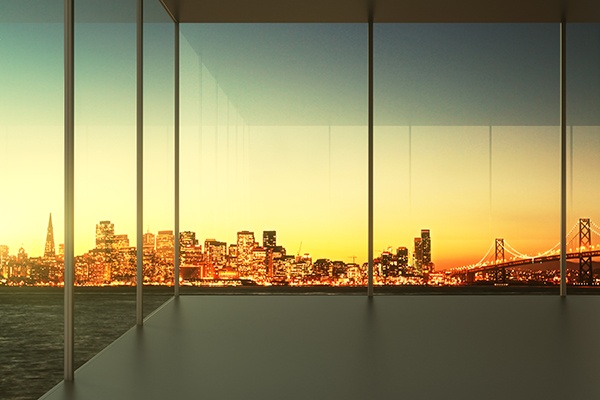
While just about every tenant still looks at square footage and price, metrics like LEED rating, amenity load and transit access are becoming more important. However, looking at these newer metrics while ignoring classic office metrics can be a recipe for a space that works on paper but doesn't quite fit in the real world. Here are five office metrics that you should still be considering -- even if no one else is talking about them.
Glass Line
One of the hot buzzwords in office space is "natural light." Outside light improves employee health and productivity, lowers energy costs for lighting and helps to create a cool, open vibe. One of the best ways to measure the potential availability of natural light is to get the space's glass line. This metric tells you how many linear feet of your space's exterior has windows. A 50 foot by 50 foot space with 40 feet of glass line will be pretty dark while one with 90 to 100 feet will have two (almost) full walls of windows and light. Ultimately, glass line is one of the old-time office metrics behind the most dynamic modern spaces.
Parking Ratio
Based on all of the hullabaloo about public transit, walk- and bike-friendly workspaces, parking ratio might seem like one of the most obsolete office metrics out there. However, a simple drive on most freeways serving office areas at rush hour confirms one simple thing: most people in most cities mostly drive to work. While the automobile industry is changing and Uber and its ilk are making car ownership less necessary, people are still buying cars, trucks and SUVs and driving themselves to work. As such, look for a building with the right parking ratio for your company's unique blend of commuting styles.
Parking and Your Office Lease
Load Factor
The dirty little secret of amenity-laden buildings is that those amenities aren't free. Instead, they get built into your space as a part of the load factor. The load factor is how the landlord charges you for your share of all of the shared space that isn't physically located inside the walls of your space. In a building with a load factor, you'll pay for 4,600 square feet of space even if you only occupy a 40 by 100 foot (4,000 square foot) space. Adding your own amenity areas in your space to the building's spaces can add up quickly and leave you paying rent on hundreds or thousands of square feet that you aren't technically using.
Column Spacing
In the industrial world, column space is crucial, but it is one of the most rarely discussed and reported office metrics. However, if you want to have a space that truly feels open, the fewer columns it has, the better it will look. If you plan to go with a plan that blends open areas with closed area, having fewer columns gives you more flexibility as to what you build and where.
CAM Charges
CAM charges are not technically in the pool of rarely discussed office metrics, but modern trends in office design make them important in a different way. Typically, CAM charges include energy and repair costs. Modern, green buildings should be built with better quality and longer-lasting materials (reducing the waste stream) and should have higher energy efficiency, reducing utility costs. As such, if you are paying more for a green space, you should see some portion of that higher rent coming back in lower CAM charges relative to less green spaces. If it isn't, consider talking to the landlord or looking at a better management buildings.
Here are some other good office space articles:
Lease or Own Your Office Space?
Six Tips for Doing an Office Build-Out
Tips to Avoid Signing the Wrong Office Lease
Subscribe to our blog for more great tips!!








